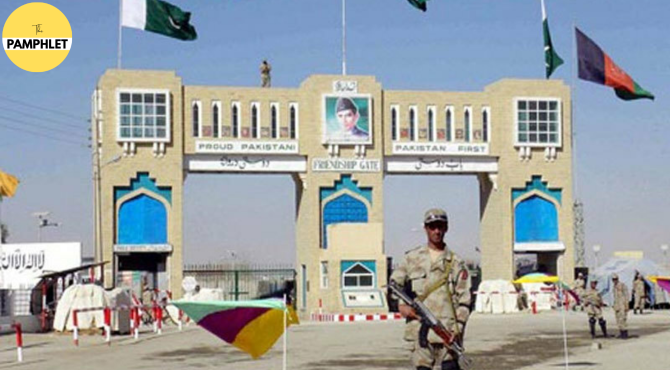Tensions along the Afghanistan-Pakistan border have reached their highest point in months after Afghanistan forces reportedly destroyed a Pakistani-constructed border gate in Spin Boldak, a key crossing between Afghanistan’s Kandahar province and Pakistan’s Balochistan. The explosion, which Afghan officials said targeted a structure “illegally erected” along the disputed Durand Line, has triggered intense fighting and civilian evacuations across the region.
According to Afghan security sources, hostilities erupted around 4 AM on October 15, with both sides exchanging heavy artillery and tank fire. The Taliban administration confirmed it launched strikes on Pakistani positions, while Pakistan’s military claimed its response was to “unprovoked aggression” allegedly supported by Tehreek-e-Taliban Pakistan (TTP) fighters sheltering inside Afghanistan.
Eyewitnesses from Spin Boldak–Chaman reported hours of continuous shelling that damaged homes and forced families to flee. Hospitals in the region have issued urgent calls for blood donations as casualties continue to rise. Although neither government has released official numbers, unverified footage circulating online appears to show destroyed military posts and bodies of soldiers on both sides.
Local sources confirmed casualties among both civilians and soldiers, though figures remain disputed.
- Afghan media claim that multiple Taliban fighters were killed in retaliatory Pakistani strikes.
- Pakistani officials, as per reports, acknowledged military losses but emphasized that “significant damage” was inflicted on Afghan tanks and border positions.
The crossfire reportedly hit residential areas, causing further displacement in Spin Boldak and nearby districts. Relief operations are underway, though access remains restricted due to ongoing hostilities.
This latest confrontation follows Pakistani airstrikes earlier in the week that, according to Afghan sources, killed 19 Taliban fighters, including a senior border commander, Haji Nusrat. The fighting marks the second major border escalation in a week, with both sides trading sharply conflicting casualty claims:
- The Taliban claim to have killed 58 Pakistani soldiers in recent operations.
- Pakistan’s military reports 23 soldiers dead and over 200 Taliban or TTP-linked fighters killed in retaliatory actions.
All major crossings, including Chaman and Torkham, remain closed, disrupting trade, aid delivery, and humanitarian transit between the two countries.
At the heart of the conflict lies the Durand Line, a 2,640-kilometer boundary drawn in 1893 between British India and Afghanistan. Successive Afghan governments have refused to recognize the border, arguing that it arbitrarily divides ethnic Pashtun communities. Pakistan, meanwhile, considers it the legitimate international boundary and has been fortifying it with fences, gates, and checkpoints since 2017 — moves often condemned by Kabul as violations of sovereignty.
Islamabad has long accused Kabul of harboring TTP militants, who use Afghan territory to stage attacks inside Pakistan. The Taliban government denies these charges, insisting it does not allow its soil to be used against neighboring states. The destruction of the border gate, however, underscores Kabul’s rejection of Pakistani fortifications along the disputed frontier.
As of Wednesday evening, sporadic gunfire and artillery exchanges continued near Spin Boldak. Both Afghan and Pakistani forces remain on high alert, and no formal ceasefire has been announced. With thousands displaced and communication lines strained, humanitarian agencies are warning of an impending crisis if the fighting continues.
The destruction of the Spin Boldak gate may prove more than a symbolic act — It represents the deepening rift between two uneasy neighbors, whose contested border remains one of South Asia’s most dangerous flashpoints.









